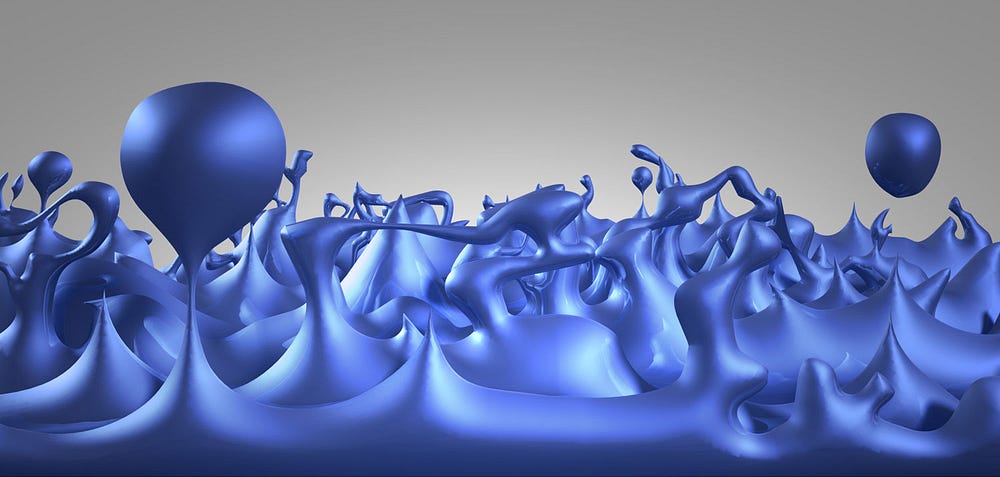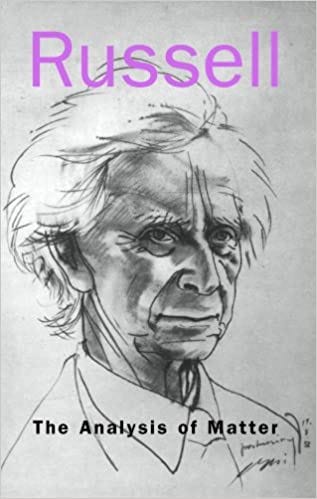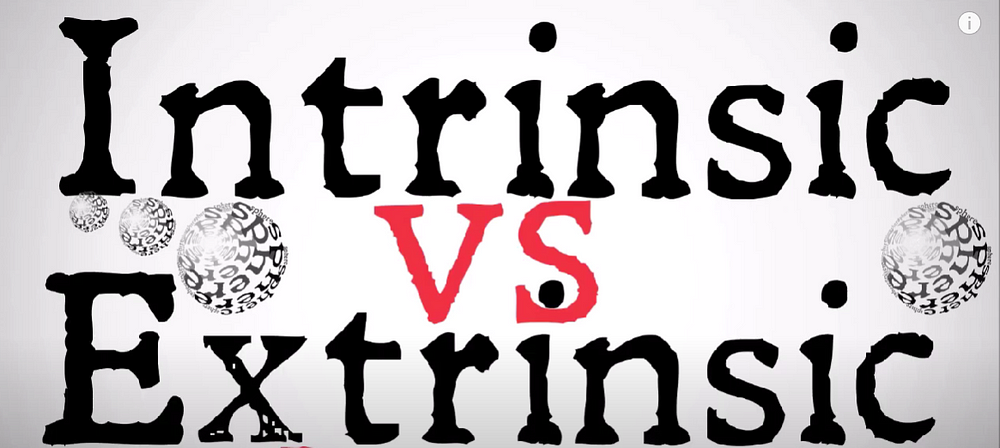Way back in 1927, English philosopher Bertrand Russell (1872–1970) fused philosophical and psychological (i.e., Humean ) insight with physics when he discussed whether or not quantum particles are things. Indeed Russel wrote his An Outline of Philosophy during the height of the (first) “revolution” of quantum mechanics.
Particles aren’t Things

Russell believed that particles aren’t things (or objects). He wrote the following words:
“The idea that there is a little hard lump there, which is the electron or proton, is an illegitimate intrusion of common-sense notions derived from touch.”

It was then that Russell offered us both a empiricist and psychological account of how most laypersons and even some scientists interpret the quantum realm.
Firstly, the following passage highlights the observational or experimental reality:
“The events that take the place of matter in the old sense are inferred from their effect on eyes, photographic plates, and other instruments.”
As for the specifics of the rejection of a (as it were) thing-ontology, Russell went on to say that “[t]here is no reason to suppose that there is a ‘thing’ at the place where the ‘crinkle’ is most crinkly”. In parallel, Russell also stated that “matter has ceased to be a ‘thing’”. Yet doesn’t the layperson believe that there is matter and that there are also things? Indeed aren’t things (or at least objects) made up of matter? That is, matter (what philosophers call a “mass term”) itself is rarely deemed to be a specific thing. That said, an ontologist can just as easily say (via stipulation and ontological analysis) that a mere random or arbitrary lump of matter can indeed be deemed to be a thing too. (Think here on the lump-of-clay-to-statue disputes in contemporary “analytic” metaphysics.)
So what did Russell believe to be the scientific reality of particles?
The Science of Particles

Bertrand Russell offered us a hypothesis on the matter. He stated that
“[f]or aught we know, the atom may consist entirely of the radiations which come out of it”.
Russell then predicted the obvious response when he continued by stating that it’s “useless to argue that radiation cannot come out of nothing”. Yet surely that response is understandable and it is Russell’s own position that’s a little counterintuitive.
In any case, Russell stated that the something-from-nothing scenario is no less (or no more) “intelligible” than thinking that radiation “comes out of a little lump”. However, surely it can be said that the idea that radiation comes out of lumps is more (not less) intelligible than saying that it comes from nothing. So no matter how inaccurate the idea that protons and electrons are things is, it was still a more believable position than stating that radiation can come out of nothing.
Russell also expressed more of the basic science of electrons and protons (at least in the 1920s) and why it is that laypersons took them to be things. Thus, in point of fact,
“the modern physicist faces cheerfully the possibility than an electron and a proton may mutually annihilate each other, and even suggests that this may be the main source of the radiant energy of the stars, because when it happens it makes an explosion”.
Thus firstly we conjecture that the electron and proton have some kind of mutual relation with one another. That alone will raise questions as to their ontological reality as separate entities (or what philosophers call individuals or particulars). In other words, if two things — a and b — always have a necessary and “mutual” relation to one another, then what right have we to see them as distinct entities in the first place?
[Note that all this isn’t directly connected to the notion of entanglement. It also turned out that it is electrons and positrons which “annihilate each other”, not protons and electrons. (Paul Dirac theoretically hinted at the positron in 1928 and Carl David Anderson discovered it in 1932. Russell was writing in 1927!)]
That later possibility is scientifically elaborated upon when Russell told us “[w]hat can be asserted” about these matters (i.e., the electron and the proton). He wrote:
“When energy radiates from a center, we can describe the laws of its radiation conveniently by imagining something in the centre, which we will call an electron or a proton according to circumstances, and for certain purposes it is convenient to regard this centre as persisting, i.e. as not a single point is spacetime but a series of such points, separated from each other by time-like intervals. All this, however, is only a convenient way of describing what happens elsewhere, namely the radiation of energy away from the centre. As to what goes on in the centre itself, if anything, physics is silent.”
Whereas earlier it was said that the word “centre” was being used as a substitute for the word “thing”, now Russell speaks of ‘“spacetime points” instead. Thus even though Russell stated that “what goes on in the centre itself, if anything, physics is silent”, he still felt comfortable talking about “spacetime points”.
Events and Substances

Bertrand Russell also offered us a physicist’s overview of events within the quantum realm. He stated that
“[m]odern physics, therefore, reduces matter to a set of events which proceed outward from a centre”.
Since Russell believed that the idea that radiation comes from lumps is unintelligible, then why is it any more intelligible to say that events (or radiation) “proceed outward from a centre”? Is a physical centre more intelligible than a lump? Despite that, Russell backs himself up by making the Kantian (as in his reference to a noumenon) point that “[i]f there is something further in the center itself, we cannot know about it”. Indeed such a thing is “irrelevant to physics”.
To put it simply: Russell believed that there are only events. The layperson — and indeed some/many physicists — mistakenly believe, however, that there are also things.
Russell went on to argue that “[w]e must think of a string of events [as a] thing”. Psychologically this is accounted for by the fact that different events are seen to be “connected together by certain causal connections”. One (Humean) conclusion to this is that we deem such events to have “enough unity to deserve a single name”.
This ostensible movement of things is also accounted for when Russell stated that when “the events are not all in the same place”, we then “say the ‘thing’ has ‘moved’”. However, such a belief is “only convenient shorthand”.
Russell scientifically and metaphysically concluded that “it can be no part of legitimate science to assert or deny the persistent entity”. To assume a persistent thing is to “go beyond the warrant of experience”.
Russell carried on with his theme of Humean constant conjunction by speaking of a light waves. He stated that these too are a “connected group of rhythmical events”. And, as before, Russell rejected the idea that a light wave is a thing. It is, instead, a “connected group of rhythmical events”. One thing that can be said here is that it can be doubted that even scientifically (or philosophically) illiterate people deem light waves to be things in any strict (or literal) sense of that word. Indeed all this depends on how closely we tie the word “thing” to the word “individual” or “particular”.
In much traditional philosophy, things (or particulars/individuals) were required to have substances to be the things that they are. In addition, all things (or substances) were deemed to be impenetrable. (Is this true? Particles were indeed deemed to be impenetrable; though not necessarily all things and certainly not substances.) As Russell put it, “[i]mpenetrability used to be a noble property of matter”. However,
“[t]he events which are the real stuff of the world are not impenetrable, since they can overlap in space-time”.
To offer more on his position on ontological substances, Russell wrote:
“It was traditionally a property of substance to be permanent, and to a considerable extent matter has retained this property in spite of its loss of substantiality. But its permanence now is only approximate, not absolute. It is thought that an electron and a proton can meet and annihilate each other; in the stars this is supposed to be happening on a large scale. And even while and electron or a proton lasts, it has a different kind of persistence from that formerly attributed to matter.”
Thus, just as it can be said that the word “centre” has become a substitute for the word “thing” in this ontology; so Russell also seems to believe that events are (in a strong sense) things too. This is shown in Russell’s articulation of the meaning of the philosophical theory of neutral monism.
Firstly, Russell stated that neutral monism is monism
“in the sense that it regards the world as composed of only one kind of stuff, namely events”.
What about Russell’s “pluralism” of entities? He then told us that “it is pluralism in the sense that it admits the existence of a great multiplicity of events”. It’s here that the notion of a thing (or an entity) is resurrected. Russell went on to state that “each minimal event” is seen as “being a logically self-subsistent entity”.
So does that all this mean that we’re left with a simple transitive statement of identity? Namely:
an event = “a self-subsistent entity” = a thing
Intrinsic and Extrinsic Properties

Bertrand Russell also asked this question:
“What do we mean by ‘piece of matter’?”
He answers his own question by telling us that “[w]e do not mean something that preserves a simple identity throughout its history”. Now that statement is partly correct and partly incorrect. It’s true that any particular thing (or “piece of matter”) won’t be have precisely the same properties over any given period of time. (That statement may not be true of particles, depending on how we see them.) So object O at time t¹ will be different in some — or in many — ways to O taken at t². In everyday terms, there are things about Paul Murphy which are true in December 2021; though which won’t be true of Paul Murphy in February 2022. And, of course, the same can be said of any given oak tree or a crab.
In other words, an object (or entity) needn’t ( as Russell puts it) “exist complete at every moment”. So it depends on what’s meant by the word “complete”. If it means that everything that “belongs” to object O at time t¹ will not do so at t², then that’s correct. Though an entity doesn’t need to be the sum of literally all its properties at every single point and place in time in its entire existence. (This was Leibniz’s position, at least according to Robert Stalnaker!) It’s only the case that certain (essential) properties are passed on from t¹ to t² to tⁿ. Of course if there aren’t any essential or intrinsic properties in the first place, then this scenario can’t work and we must take Russell literally.
So it doesn’t follow that because any object (or thing) x doesn’t remain identically the same in all respects over time that it doesn’t remain the same in at least some respects.
In metaphysical terms, we call those unchanging aspects intrinsic or essential properties. (Although the terms “essential” and “intrinsic” are related; they aren’t synonyms.) However, we may not like such a reference to essential properties and want to to use the words, instead, “important” or “enduring” properties (see Quine 1960). Thus I will loose millions of neurons (or cells) over time; just as an oak tree will loose many of its leaves. Nonetheless, both persons and trees do have important characteristics — functional, formal and physical — which last over time. Indeed if that weren’t the case, then indeed we wouldn’t have any right to keep on referring to a particular thing (or even a particular person) with the same name over time. It can be said here that Russell did believe that we have no (philosophical) right to use the same name over time because he rejected intrinsic properties. Either that or he didn’t deem the enduring and/or important properties of an x to also be intrinsic properties.
The upshot of Russell’s position (if only in 1927) is that there are no intrinsic properties and, consequently, there aren’t really any things (or objects). That is, all x’s properties are extrinsic. (Semantically, surely if there are no intrinsic properties, then there are no extrinsic properties either.)
Russell’s (partly Kantian) bottom line is that we have no access — either observationally or otherwise — to the intrinsic characteristics of such things. Instead “[w]hat we know about them” is simply “their structure and their mathematical laws”. That is, all we’ve got is mathematical structure.
This basically means that it’s mathematical structure “all the way down” — at least in the case of quantum mechanics.









No comments:
Post a Comment